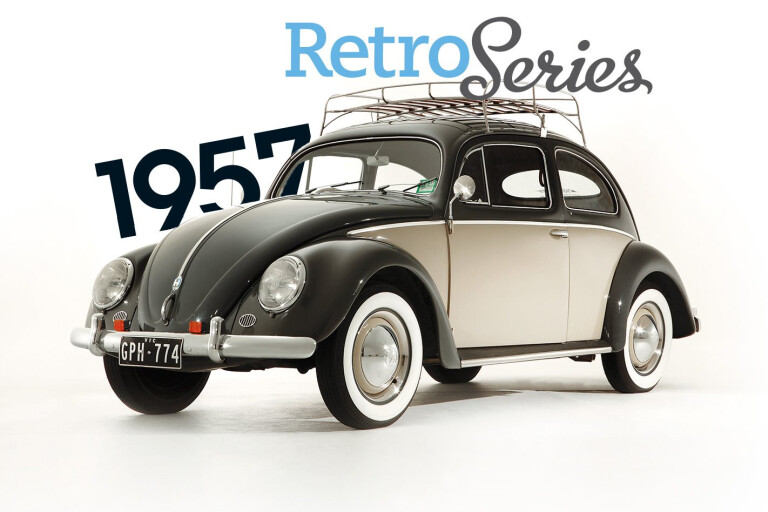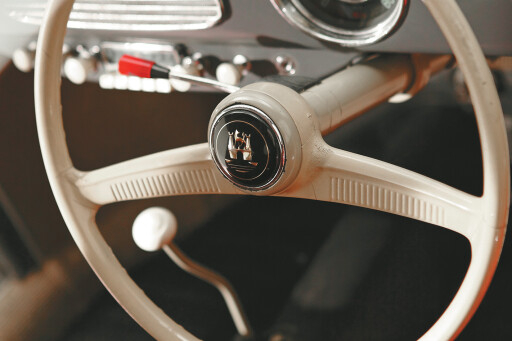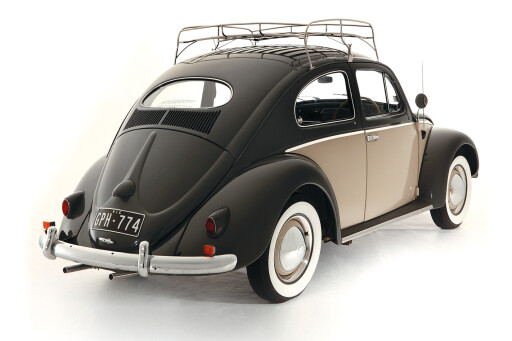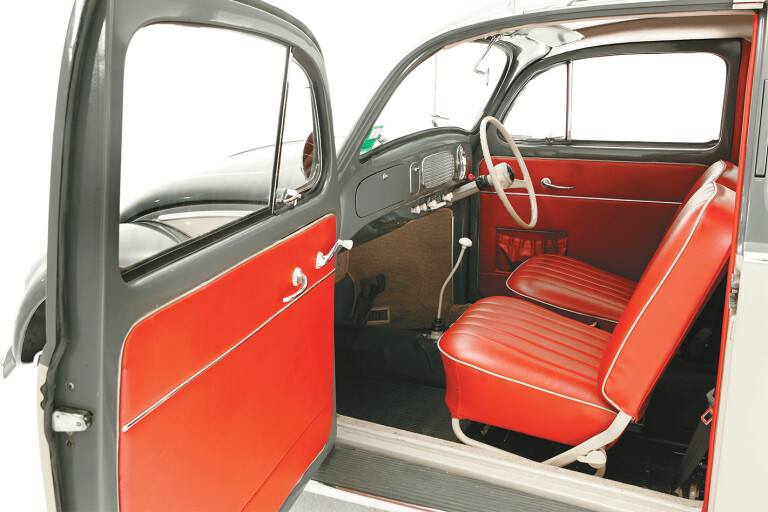
Ferdinand Porsche is rightly hailed as a genius engineer and a key automotive figure.
In 1898, aged just 23, he designed an all-wheel-drive, petrol-electric hybrid; later came the Mercedes-Benz SSK, the radical Auto Union rear-engined racers, and, proving his versatility, some of Germany’s most fearsome WW2 tanks. Then there’s the small matter of the Volkswagen ‘Beetle’ Type 1, whose 21.5 million units make it still the world’s biggest selling car (rather than nameplate).
In 1931, in conjunction with Zundapp, Porsche began developing an economical, rear-engined car, the Porsche Type 12. Porsche had already designed an air-cooled, horizontally opposed four-cylinder engine.
At the 1934 Berlin motor show, German chancellor Adolf Hitler challenged car makers to produce a car to sell at 1000 Reichsmarks, about half the typical price for a car at the time. His transport ministry drew up the specs: up to five passengers, a 100km/h top speed, fuel consumption of seven litres per 100km, and easy to convert to military use and mount a machine gun.

The RDA, the German car makers’ industry body, approached Porsche’s engineering firm in 1934 (although Porsche was already known to Hitler through the Auto Union racing program). Over the next three years, Porsche developed the Volkswagen (people’s car), then known as the KdF-wagen (Kraft durch Freude, ‘strength through joy’ car).
In truth, the Volkswagen had several parents, including oft-overlooked body engineer Erwin Komenda and – most controversially – Hans Ledwinka of Tatra (Czechoslovakia), whose 1933 V570 might well have set the template for the Volkswagen.
Only a handful of consumer cars were built in 1939 before the outbreak of WW2, when production switched to military variants.
After the war, British Army officer Ivan Hirst was ordered to take command of the heavily damaged Wolfsburg factory. He enlisted former employees and slowly reignited production. The minimally revised pre-war design was launched to the public at the 1947 Hannover Fair – and the rest is history.

The popular perception (cultivated by a legendary US advertising campaign) was that the ‘beetle’ never changed.
In fact, among constant refinements, there were noticeable evolutions in 1949 (cabriolet version), 1953 (oval window), 1954 (1.2-litre engine), 1966 (1.3-litre and ball-joint front suspension), 1968 (1.5-litre engine and front disc brakes), 1972 (MacPherson struts, near doubling boot capacity), and ’73 (curved screen).
The last beetle was built in Mexico on 30 July 2003, bearing the chassis number 21,529,464.
Light and right
The VW engine pursued simplicity with air-cooling, horizontally opposed cylinders and pushrod OHV, but materials (alloy crankcase and cylinder heads, cast iron cylinders, forged steel crankshaft) made it light and durable.
Engine’s initial 982cc went to 1131cc (with 18kW/65Nm) for post-war production, with a final increase to 1584cc in 1971. Four-speed manual ’box initially lacked synchro on first. Three-speed semi-auto offered here with heavily revamped 1500 in ’68.
.jpg )
Keep it simple
The chassis itself was simple enough, with a central backbone supporting a near-flat pressed steel platform. Front suspension comprised of two parallel torsion beams with kingpins and telescopic dampers.
Rear was by swing-axles with transverse torsion bar and telescopic dampers. Superbug (1971) brought semi-trailing arm IRS, then MacPherson strut front (’72).

Changing with the times
Rear-mounted engine helped make the Vee-Dub’s front cabin feel spacious, in a similar context to contemporary ‘people’s cars’ like the Fiat 600, Citroen 2CV, and Renault 4CV. Painted steel dash wasn’t just economy spec, but common practice up to the 1970s.
Flat screen, upright seating, and floor-hinged pedals provided a quaint drive. Rear cabin space was hampered by curved roof. Rearward vision improved only slightly with the introduction of a 23-percent larger rectangular window (1958-’72).


COMMENTS